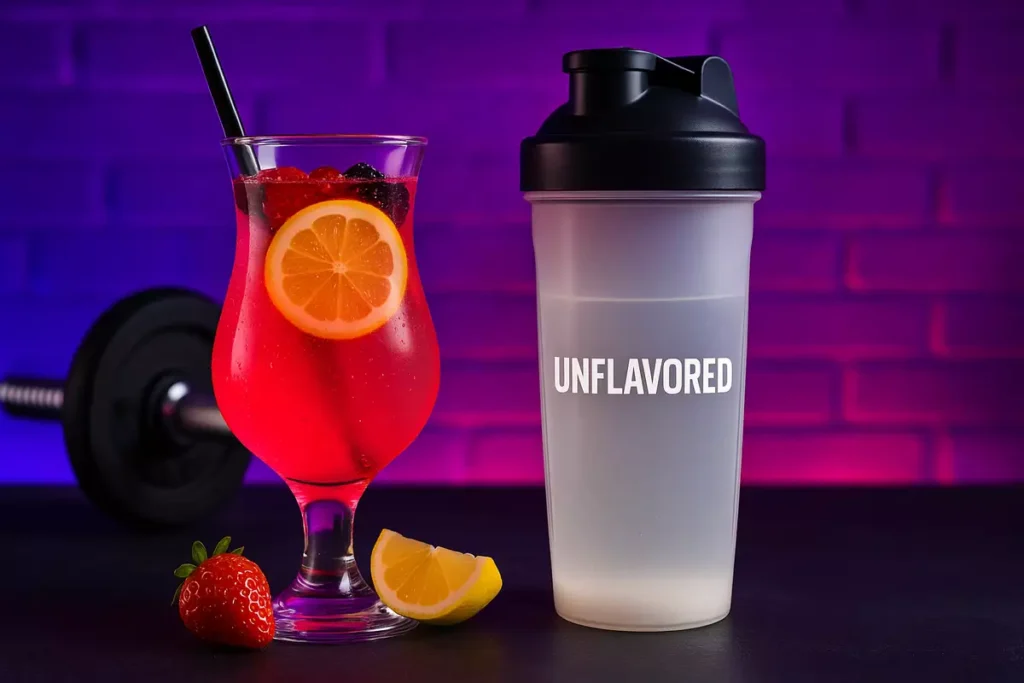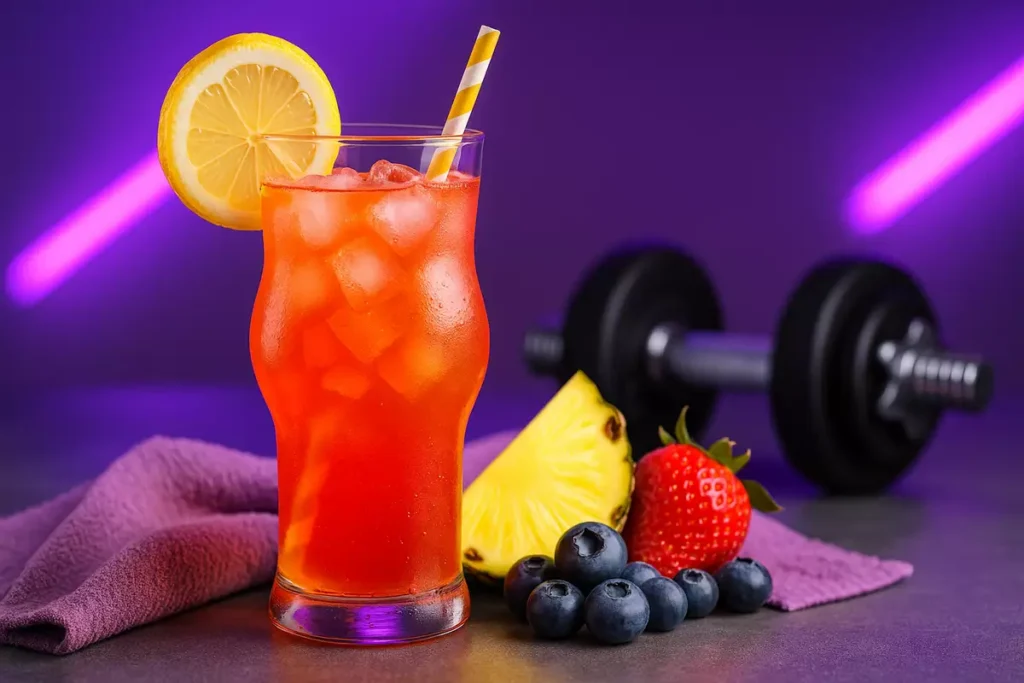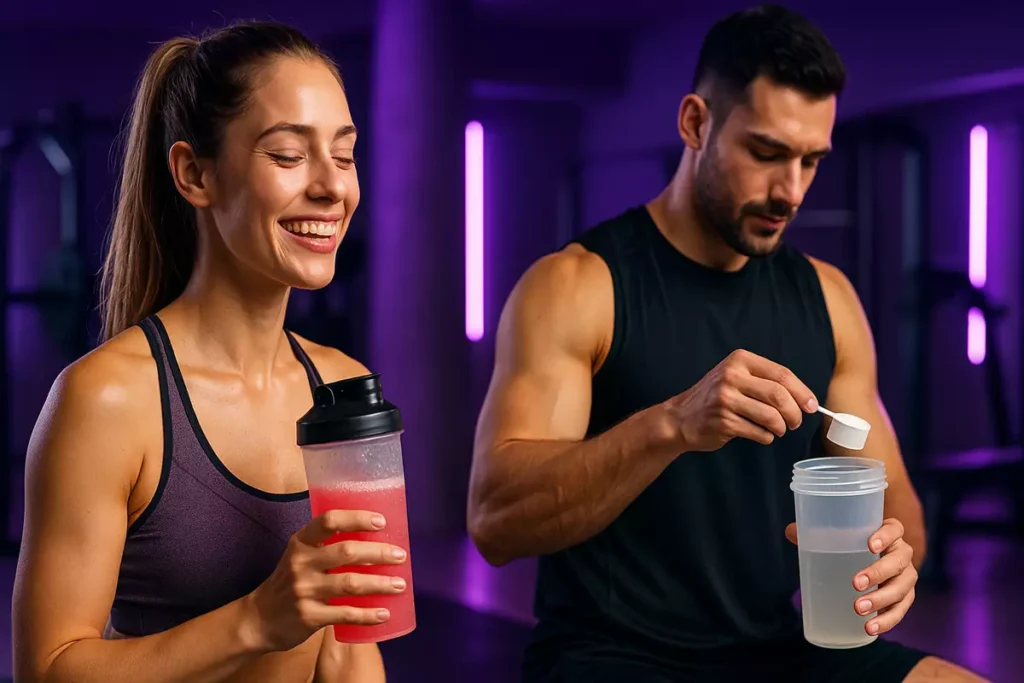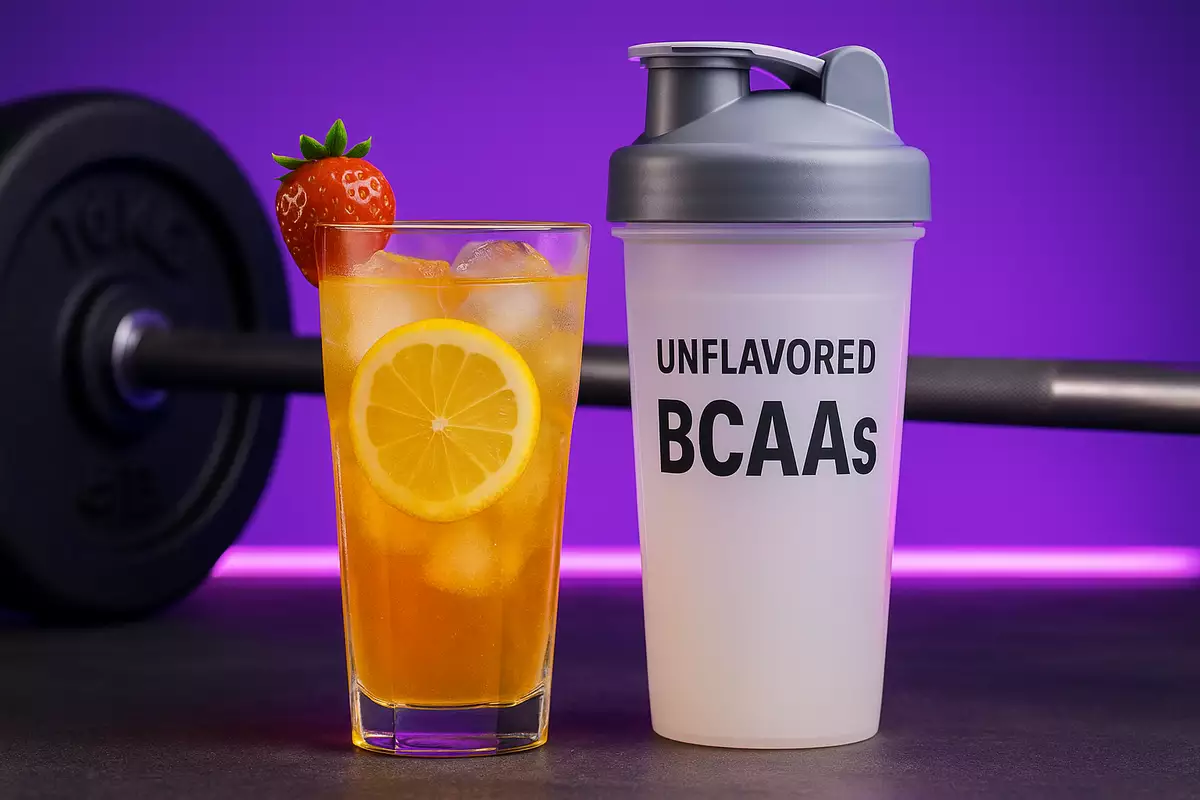Are you torn between flavored and unflavored BCAAs for your workouts?
You’re not alone. As a fitness coach, I’ve seen clients struggle with this choice more than you’d think. One option is tasty and fun. The other is clean and stackable. But which one actually supports better performance, hydration, and consistency?
In this article, I’ll break down the real pros and cons—not just from science, but from years of real-life training experience. Whether you’re cutting, bulking, or somewhere in between, the right pick could seriously impact your results.
Let’s dive in and find out which BCAA form truly fuels your goals.
Table of contents
Flavored vs Unflavored BCAAs — Quick Answer

Let’s get straight to it: both flavored and unflavored BCAAs work the same when it comes to muscle recovery and endurance. They contain the same amino acids—leucine, isoleucine, and valine—so the difference comes down to taste, additives, and how likely you are to actually drink them.
From my years of experience as a fitness coach, I can say this confidently:
- Flavored BCAAs are easier to stick with, especially if you hate bitter tastes.
- Unflavored BCAAs are cleaner and stack-friendly but take some getting used to.
Choosing between the two depends more on your personality, routine, and discipline than anything else. If you’re not sure how BCAAs work in preserving muscle, especially during fat loss, check out my full guide on BCAAs for muscle preservation in cutting.
Why Taste Matters in BCAA Supplements
You might not think taste matters much in a supplement, but in real life—it does.
I’ve seen it over and over again: if your BCAA tastes good, you’re way more likely to drink it during your workout. For many of my clients, flavored BCAAs act like a mini reward that keeps them sipping and hydrating, especially during longer sessions.
Take Luca, one of my Italian clients who struggled with intra-workout hydration. He simply wasn’t drinking enough. Once we introduced a watermelon-flavored BCAA, his hydration habits improved overnight. His endurance and pump followed suit.
Taste can even affect consistency across different sports. For example, in my article about BCAAs for runners and endurance athletes, I explain how flavored options often help endurance athletes hydrate more effectively during long-distance events.
Benefits of Flavored BCAAs

Flavored BCAAs are a game-changer for beginners and even intermediate lifters. Here’s why they work so well:
- They mask the natural bitterness of branched-chain amino acids.
- They make hydration more enjoyable, especially during hot gym sessions or fasted cardio.
- They come in a wide range of flavors—from tropical mango to sour cherry—which keeps things exciting.
I usually recommend flavored BCAAs to anyone who’s just starting out or those who struggle with drinking plain water. It builds consistency, which in the long run is way more valuable than any single supplement.
If you’re curious about what ratio is best in your flavored formula, check out this breakdown of 2:1:1 vs 4:1:1 BCAA ratios.
Pros of Unflavored BCAAs
Now, let’s talk about unflavored BCAAs.
They’re not exactly tasty—but they have their place, especially if you’re a clean-eating enthusiast or stack multiple supplements.
Personally, I’ve shifted to unflavored BCAAs during my cutting phases. I mix them with cold lemon water or unsweetened green tea, and it gets the job done without the added sucralose or artificial colors.
Here’s what I love about them:
- No dyes, no sweeteners, no fluff.
- Perfect for stacking with creatine, EAAs, or pre-workouts.
- Better control over your overall supplement intake.
A Canadian client of mine, Sophia, couldn’t handle the artificial aftertaste of her flavored BCAA. We switched her to unflavored and added a splash of fresh lemon juice. Problem solved—and she stuck to her plan without complaints.
For those on plant-based diets, I often recommend checking out this full guide to vegan BCAA supplements—many of which are only available unflavored or minimally sweetened.
When to Choose Flavored or Unflavored (Real-World Scenarios)

Let’s make it simple.
Go for flavored BCAAs if:
- You’re just starting out and taste keeps you motivated
- You do long, sweaty workouts and need something enjoyable to sip
- You struggle with staying hydrated
Go for unflavored BCAAs if:
- You follow a clean-eating diet or avoid artificial sweeteners
- You like to stack supplements in one drink
- You’re deep in a cut and minimizing additives
A great example is Carlos, a Spanish bodybuilder who hated the taste of his unflavored BCAA. He kept skipping it during workouts.
Once he switched to a mango-flavored version, he became more consistent. His recovery between leg days improved dramatically—especially during peak prep.
If you’re wondering about timing, I break it all down in this guide on taking BCAAs before vs after workouts. Spoiler: both can work depending on your schedule and training intensity.
Final Verdict: What I Recommend as a Trainer
If you’re serious about results, it’s not about which one is technically “better”—it’s about which one you’ll actually use.
I started with flavored, moved to unflavored, and now switch based on my phase and goal.
For beginners, I usually say:
“Pick the one you’ll stick to. You can always optimize later.”
Remember, your body doesn’t care about the flavor—it cares about the consistency. So build the habit first. Get the taste right for your preference. Then tweak based on your needs.
Whether you like it sweet or you prefer it clean, what matters most is showing up, staying consistent, and fueling your body with what it needs to recover and grow.
And don’t forget: more is not always better. If you’re new to BCAAs, read this important guide on overdosing and side effects.



Leave a Reply